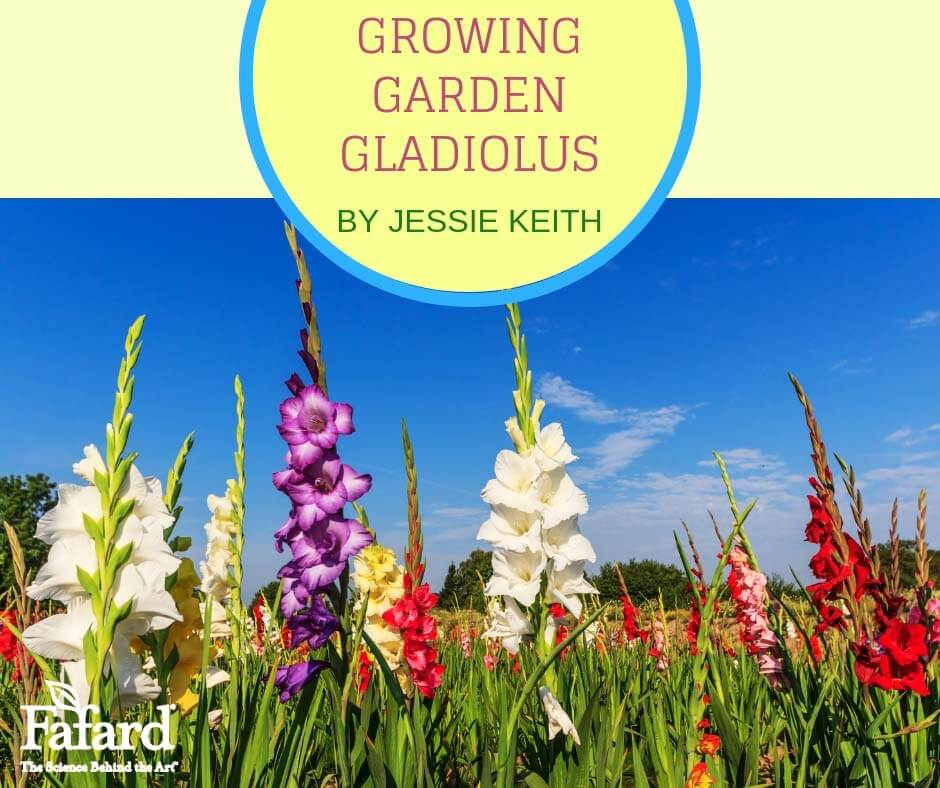
Few gardeners feel ambivalent about common garden gladiolus (Gladiolus x hortulanus). In the decades since the first large-flowered hybrids were developed in the late 1830s, the tall flower spikes have been in and out of fashion many times. But glads and the gardeners who love them are nothing if not persistent. Even when horticultural fashion arbiters ignore the genus, the many-colored blooms show up in all kinds of places, from the end rows of vegetable gardens to carefully tended perennial borders and florists’ bouquets.
The tall garden hybrids are impressive, but the genus is full of other winning plants, including petite species and varieties that are well suited to container and small garden culture. Many species glads have an informal look that is more reminiscent of the wildflower garden than the florist shop. Some are also fragrant. All gladioli share the characteristic long, sword-shaped leaves and summer bloom time.
The following is a brief guide to some of the stars of the gladiolus galaxy.
Gladiolus Grandiflora Hybrids
These are the plants that come to mind when most people hear the word “gladiolus.” All grow from corms that are tender in cold winter climates. Standard grandifloras soar between 3 and 6 feet tall. The trumpet-shaped individual flowers, which can be up to 6 inches wide, open from the bottom of the spike to the top. Vendors carry scores of named varieties in just about every imaginable color. Bi-colored glads are available in an amazing array of combinations. Breeders have also developed shorter, dwarf varieties, including the vividly marked “butterfly” types, which reach only 1 to 3 feet.
Gladiolus Primulinus Hybrids
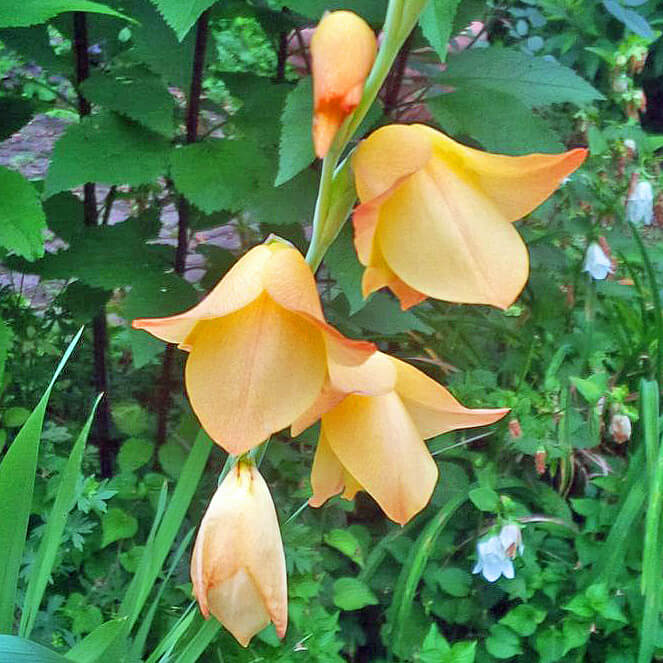
These plants, formerly known as Gladiolus primulinus, are now classified as Gladiolus dalenii. Somewhat shorter, at 2 to 4 feet tall, the individual blossoms are hooded, rather than open like the grandiflora types. They also tend to be smaller and less crowded on the stems, giving the plants an informal feel. The primulinus glads are especially useful to cold winter gardeners, because they are hardier than grandifloras. Some varieties, like golden-apricot ‘Boone,’ are cold hardy to USDA zone 6.
Gladiolus Nanus Hybrids
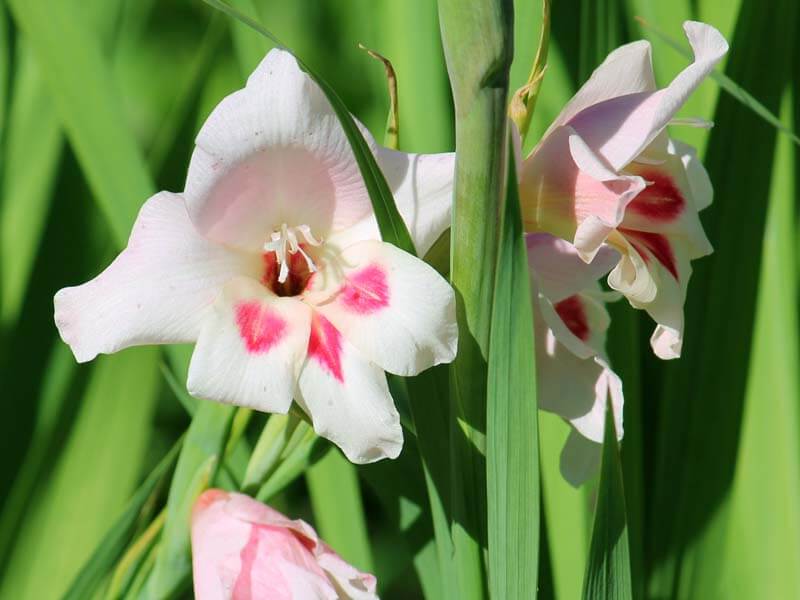
Also smaller and less formal than the grandifloras, the Nanus Hybrids, bred from Gladiolus nanus, bear up to three slim flower stalks with up to ten relatively small individual flowers. These cold-tolerant miniatures may also feature distinctive markings.
Byzantine Gladiolus
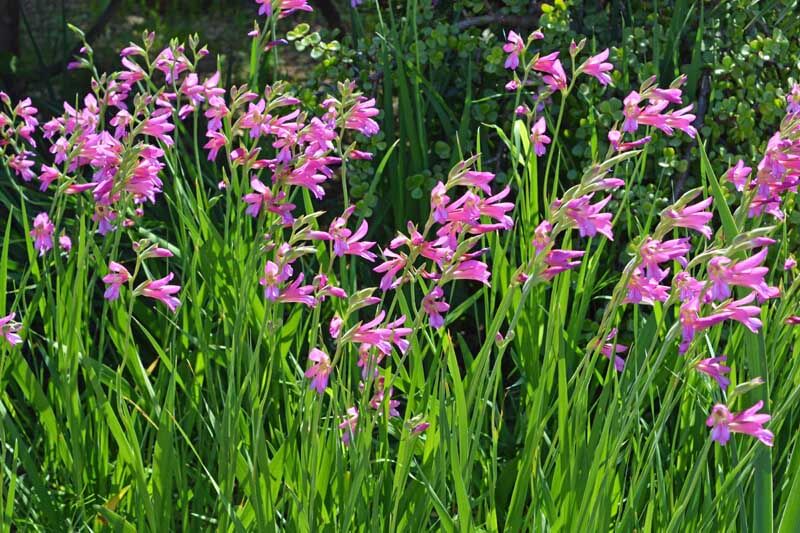
Native to the Mediterranean, Gladiolus communis var. byzantinus blooms somewhat earlier than grandiflora types and is also more cold-tolerant. The 24- to 36-inch stems are slender and arch gracefully, bearing ten to twelve individual, open magenta flowers per stem. Byzantine glads bloom earlier than their large-flowered relatives and naturalizes readily. They are fixtures in old southern gardens and have often been passed along from gardener to gardener.
Abyssinian Gladiolus
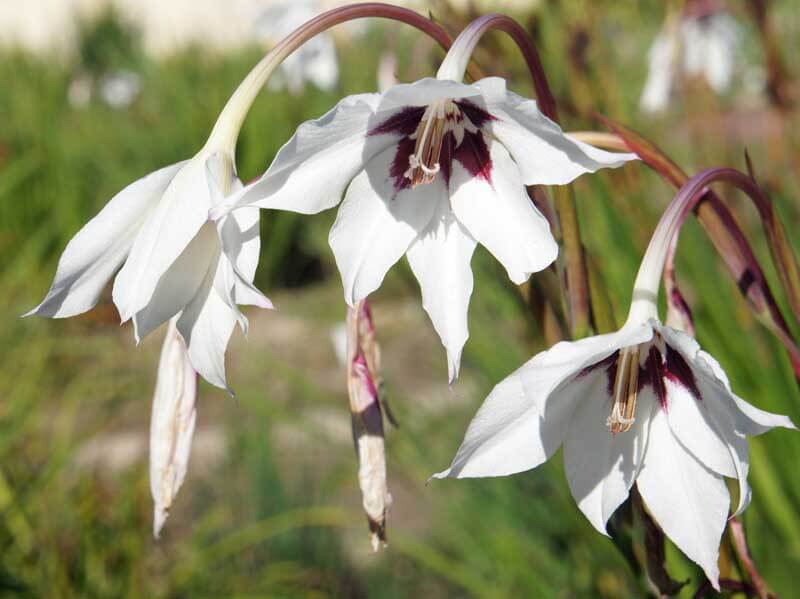
Formerly known as Acidanthera, Abyssinian gladiolus (Gladiolus callianthus ‘Murielae’) has a distinctive, orchid-like appearance and a pronounced fragrance. Introduced in the late nineteenth century, the blossoms feature sharply pointed white petals with dark purple centers. Abyssinian glads grow on slender stems that rise from 3 to 4 feet in height.
Growing Gladiolus

Gladiolus corms should be planted 4 to 6 inches deep in rich, well-drained soil. Before planting, amend heavy clay soil with organic material like Fafard Garden Manure Blend or Fafard Natural and Organic Compost Blend. For container-grown specimens use a complete potting medium such as Fafard Ultra Potting Mix With Extended Feed. Tender gladiolus hybrids can be grown as annuals in cold weather climates. To keep desirable varieties from year to year, lift the corms in fall and store in a dry, frost-free location. Replant in spring after all danger of frost has passed. Grandiflora types may need stakes or other support to prevent the heavy flower stalks from flopping, but shorter varieties can stand on their own.
Gladioli are sometimes known as “sword lilies” for the sword-like shape of their foliage. Arm your beds and borders with these “swords” and they will cut through the summer garden doldrums.







 The best honey bee plants provide a good supply of both sugary nectar and protein-rich pollen sought after by these and other long-tongued bees. Lots of beautiful garden flowers provide both in high quantities. Here are our top 10 favorites organized by bloom time. Choose one for each blooming period and you’ll have great bee blooms throughout the growing season! All are sun-loving and grow best in good soils with regular to good drainage. Amend with F
The best honey bee plants provide a good supply of both sugary nectar and protein-rich pollen sought after by these and other long-tongued bees. Lots of beautiful garden flowers provide both in high quantities. Here are our top 10 favorites organized by bloom time. Choose one for each blooming period and you’ll have great bee blooms throughout the growing season! All are sun-loving and grow best in good soils with regular to good drainage. Amend with F













